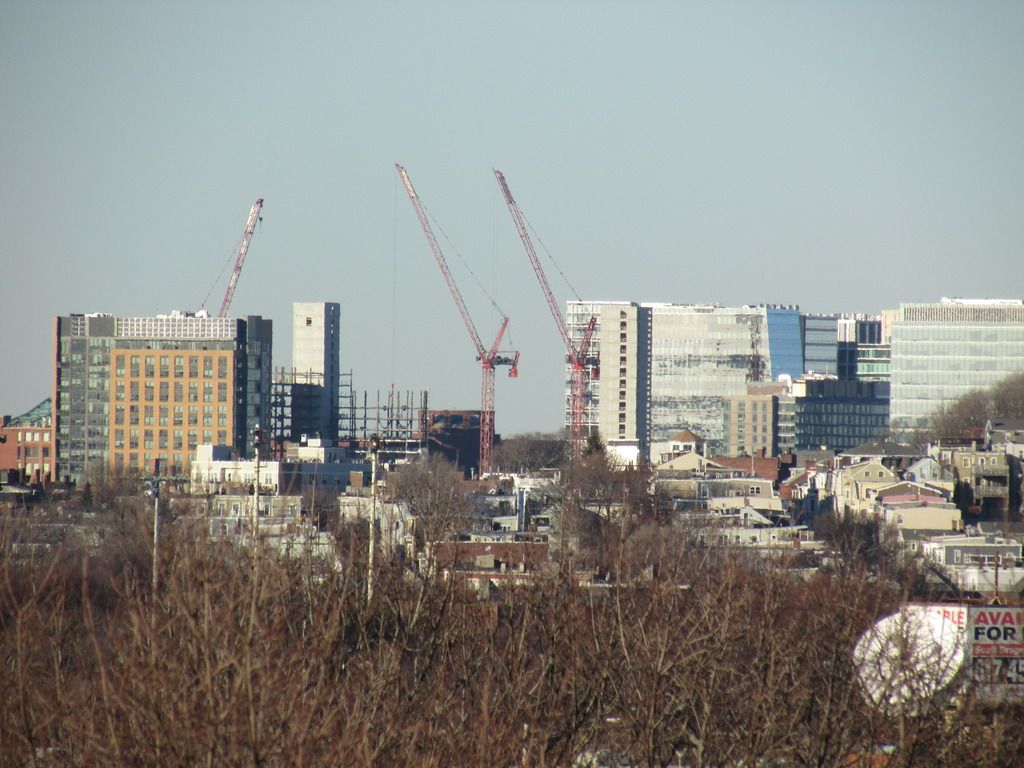whighlander
Senior Member
- Joined
- Aug 14, 2006
- Messages
- 7,812
- Reaction score
- 647
Re: One Seaport Square | Parcels B-C@Seaport Sq. | Seaport
CSTH -- You draw too many Mega Conclusions without nearly enough evidence -- Are you an astronomer [pro or ameteur] by any chance -- they are notorious for creating classes of objects from one example {google BL Lacertae Object}
Back to the issue of primacy of streets, buildings, or land forms -- all of them especially in Boston
Often the original "Cow Path" was defined as the easiest route from one well established place [e.g. the Common] to another [e.g. the Spring] with some sort of obstacle to be avoided -- e.g. hill or water
People then built structures adapted to the street pattern that then existed
Sometime later the "powers that be" changed the underlying land form by cutting down the hill or filling the water obstacle
Sometime after that the street layout might be revised to accommodate new forms of commerce or the new availability of land to straighten the route -- sometimes this happened while leaving behind some older buildings better adapted to the old streets
Now we call all of the above Quaint, European and Bostonian -- but in reality its just the result of constantly changing things incrementally
Six exhibits where the streets changed significantly in relatively short order [order of 20 to 50 years]
1) Franklin St. -- see for example the famous Tontine Crescent
2) Fort Hill -- several streets that used to circle the hill -- which today doesn't exist at all
3) Causeway and Canal area -- no need for either anymore no canals and no Mill pond
4) Fan Pier -- no fan of railroad lines with finger piers
5) Cross Street and the old Wharfs around Lewis -- and no it wasn't the original Central Artery that truncated the Wharf Building it was the new streets
6) Cambridge St., Bowdoin Sq., Court Street and all changes predated Government Center
There are many more left to the alert reader
Man, it's right in front of your nose but you can't see it. It's not the buildings that define 'boston character' - it's the streets and the lots.
Yes, wood yields to brick and then to granite and to precast. Neighborhoods go in and out of fashion. Houses are repurposed as shops, and factories become houses. All of that happens on the scale of decades, or generations at most.
The layout of streets and building lots changes much more slowly, if at all. Skyscrapers among cowpaths, etc. etc. And the character of those things is what people have in mind when they think of boston. Here are the characteristics of our most distinctive 'hoods that are absent in the seaport:
- a hierarchy of streets....it's not that they all have to be small and tangled, like they are downtown....in the back bay you have grand boulevards, residential streets, and service alleys woven into a thick matrix. But the point is that they complement each other as a system and provide an intelligible character to the neighborhood
t
CSTH -- You draw too many Mega Conclusions without nearly enough evidence -- Are you an astronomer [pro or ameteur] by any chance -- they are notorious for creating classes of objects from one example {google BL Lacertae Object}
Back to the issue of primacy of streets, buildings, or land forms -- all of them especially in Boston
Often the original "Cow Path" was defined as the easiest route from one well established place [e.g. the Common] to another [e.g. the Spring] with some sort of obstacle to be avoided -- e.g. hill or water
People then built structures adapted to the street pattern that then existed
Sometime later the "powers that be" changed the underlying land form by cutting down the hill or filling the water obstacle
Sometime after that the street layout might be revised to accommodate new forms of commerce or the new availability of land to straighten the route -- sometimes this happened while leaving behind some older buildings better adapted to the old streets
Now we call all of the above Quaint, European and Bostonian -- but in reality its just the result of constantly changing things incrementally
Six exhibits where the streets changed significantly in relatively short order [order of 20 to 50 years]
1) Franklin St. -- see for example the famous Tontine Crescent
2) Fort Hill -- several streets that used to circle the hill -- which today doesn't exist at all
3) Causeway and Canal area -- no need for either anymore no canals and no Mill pond
4) Fan Pier -- no fan of railroad lines with finger piers
5) Cross Street and the old Wharfs around Lewis -- and no it wasn't the original Central Artery that truncated the Wharf Building it was the new streets
6) Cambridge St., Bowdoin Sq., Court Street and all changes predated Government Center
There are many more left to the alert reader


































